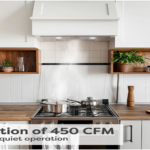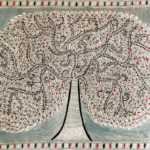Imagine stepping outside to a lush, green lawn that looks pristine all year round. No muddy patches, no brown spots—just vibrant turf ready for play or relaxation. Artificial turf has become the go-to solution for homeowners seeking a beautiful landscape with minimal upkeep.
But what happens after installation? Maintaining your turf is essential for ensuring it remains in top condition and continues to bring you joy.
In this guide, we’ll explore effective methods to maintain your turf after installation. From watering techniques to pest control strategies, we’ve got the tips you need to keep your synthetic grass looking its best.
Whether you’re a new turf owner or just seeking ways to improve maintenance practices, you’ll find valuable insights here. Let’s dive into how you can enjoy a stunning lawn without the hassle!
Understanding Artificial Turf
Artificial turf, often called synthetic grass, is a man-made surface designed to mimic the look and feel of natural grass. Typically made from polyethylene, polypropylene, or nylon fibers, it offers durability and resilience against wear
.This innovative solution has gained popularity for both residential and commercial spaces. It provides an evergreen appearance without the need for watering, mowing, or fertilizing.
Understanding its construction is crucial. The blades are usually tufted into a backing material that allows water drainage while providing stability. This structure ensures that your turf can withstand heavy foot traffic and various weather conditions.
Additionally, modern advancements have improved realism significantly. Many products feature varied blade lengths and colors to replicate the nuances found in nature. With artificial turf, you get beauty along with practicality—making it a smart choice for many environments.
The Benefits of Installing Artificial Turf
Artificial turf offers a range of advantages that make it an appealing choice for homeowners and businesses alike. One significant benefit is its low maintenance requirements. Gone are the days of mowing, watering, or dealing with pesky weeds.
Another great aspect is durability. Artificial turf can withstand heavy foot traffic without losing its lush appearance. This makes it ideal for sports fields, playgrounds, or any high-use area.
In addition to being hardy, synthetic grass is environmentally friendly. It conserves water and eliminates the need for chemical fertilizers and pesticides often used on natural lawns.
The aesthetic appeal cannot be overlooked either. With various styles and colors available, artificial turf can enhance the beauty of any landscape while providing a consistent look year-round.
Safety features like shock absorption reduce injury risks during activities or playtime, making it suitable for families with children or pets.
Preparing for Turf Installation
Preparing for turf installation is crucial to ensure a successful outcome. Start by assessing your current lawn conditions. Identify any drainage issues or uneven areas that need attention.
Once you’ve evaluated the space, it’s time to clear out existing grass and weeds. This step prevents unwanted growth from disrupting your new turf. You may need tools like shovels, rakes, and a sod cutter for effective removal.
Next, consider the base layer. A well-compacted base of crushed stone or sand will enhance drainage and provide stability for your artificial turf.
Don’t forget about planning the layout! Visualize how the pieces will fit together before you start laying them down to minimize seams and maximize aesthetics.
Gather all necessary materials beforehand—adhesives, infill products, and seam tape—to make the installation process smooth sailing once you’re ready to go.
Essential Tools for Maintaining Your Turf
Maintaining your turf requires the right tools to keep it looking pristine. Begin with a stiff broom or rake, perfect for removing debris and keeping the surface clean.
A leaf blower can be a game changer, making quick work of leaves and dirt. It saves you time while ensuring your artificial grass remains free from clutter.
Invest in a high-quality hose with an adjustable nozzle for watering when necessary. Even though artificial turf needs less water than natural grass, occasional rinsing helps maintain its appearance.
Consider having a grooming tool on hand as well. This helps refresh the fibers and keeps them standing tall after heavy use.
Don’t forget about gloves! They protect your hands during maintenance tasks and ensure you’re comfortable while caring for your investment. Each tool plays its part in preserving the beauty of your new turf space.
Watering and Fertilizing Your Turf
Watering artificial turf is essential, but it’s different from natural grass. In most cases, you won’t need to water your turf regularly. However, rinsing it occasionally helps remove dust and debris.
If you live in a particularly dry area or experience high temperatures, a light watering session can keep the surface cool. It also refreshes the appearance of your turf.
Fertilizing artificial turf isn’t necessary since it doesn’t grow like natural grass. Still, if you want to enhance its look and longevity, consider using infill materials that contain nutrients specifically designed for synthetic surfaces.
Be mindful of using organic fertilizers; they could attract pests or create unwanted odors when combined with pet waste. Regular maintenance will contribute to an attractive and functional lawn without much fuss on the fertilization front.
Mowing and Edging Techniques
Mowing artificial turf is quite different from maintaining natural grass. First, there’s no need for a traditional mower because synthetic grass does not grow. However, if you have infill or longer blades, using a power broom can help keep fibers standing upright.
Edging is crucial to give your yard a polished look. Use an edger tool along the perimeter to create clean lines that separate your turf from surrounding areas like flower beds or walkways.
Make sure the edges are smooth and even so that water drains away properly and prevents pooling.
Regular maintenance of these edges prevents overgrowth of nearby plants into your turf, ensuring its longevity and aesthetic appeal. Remember to check for any loose seams at the borders while you’re at it; fixing them early saves headaches later on!
Dealing with Weeds and Pests on Your Turf
Weeds and pests can be a nuisance even on artificial turf. Though synthetic grass is designed to minimize these issues, it isn’t entirely immune.
Regular inspections help identify any unwanted guests early. If you spot weeds poking through the seams, act quickly. A simple solution is to pull them out by hand or use a specialized weed killer safe for your turf.
Pests like insects might also make an appearance. Keeping your area clean and free of debris can deter many pests from setting up camp in your yard.
For more persistent problems, consider natural repellents made with essential oils. They’re effective and won’t harm your family or pets.
Maintaining good airflow around the turf will discourage mold growth too, which can attract unwanted critters. Stay vigilant and proactive to keep your turf looking pristine all year round!
Seasonal Maintenance Tips
Seasonal maintenance is crucial for keeping your artificial turf looking its best throughout the year.
In spring, inspect your turf for any winter damage. Remove debris and give it a thorough rinse to revive its vibrant colors.
Summer calls for regular brushing to prevent matting from heat and foot traffic. Consider applying infill if needed, as this helps with cushioning and stability.
As fall approaches, rake up leaves promptly. They can trap moisture against the turf, leading to mildew or mold growth.
Winter requires less frequent upkeep but don’t forget about snow removal! Use a plastic shovel or broom—metal tools can damage the surface.
Each season brings unique challenges, so staying proactive ensures your turf remains lush and inviting all year long.
Conclusion
Maintaining your turf after installation is crucial for keeping it looking vibrant and fresh. With the right care, you can enjoy a beautiful outdoor space that requires minimal upkeep compared to natural grass.
Regular watering, appropriate fertilization, efficient mowing techniques, and effective pest control are all key elements in this process.
By following these steps, you’ll ensure that your lawn remains an inviting space for relaxation or playtime with family and friends. Your commitment to maintaining your turf will pay off significantly in terms of both appearance and durability. Enjoy the beauty of your artificial grass!






Leave a Reply
You must be logged in to post a comment.